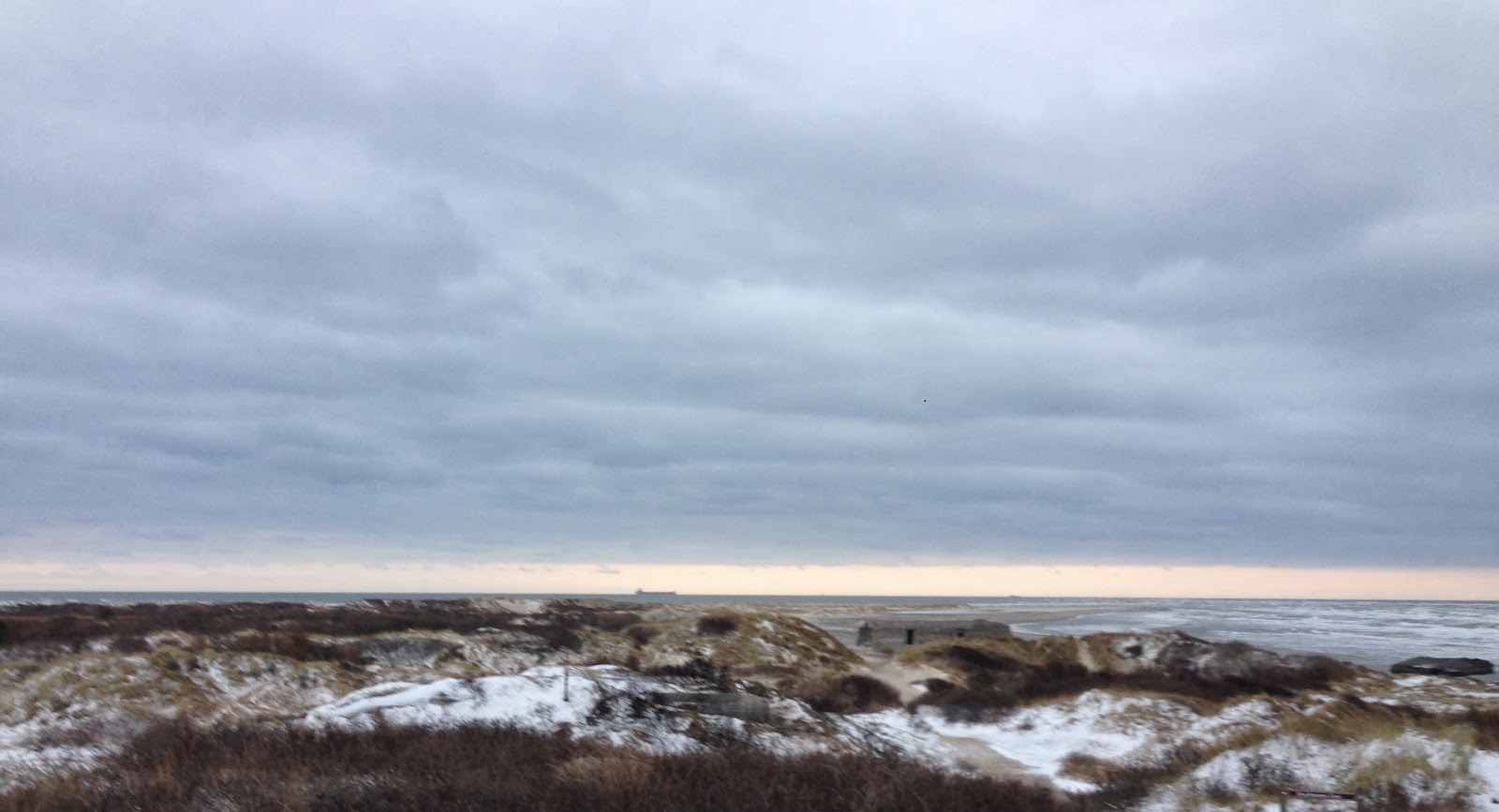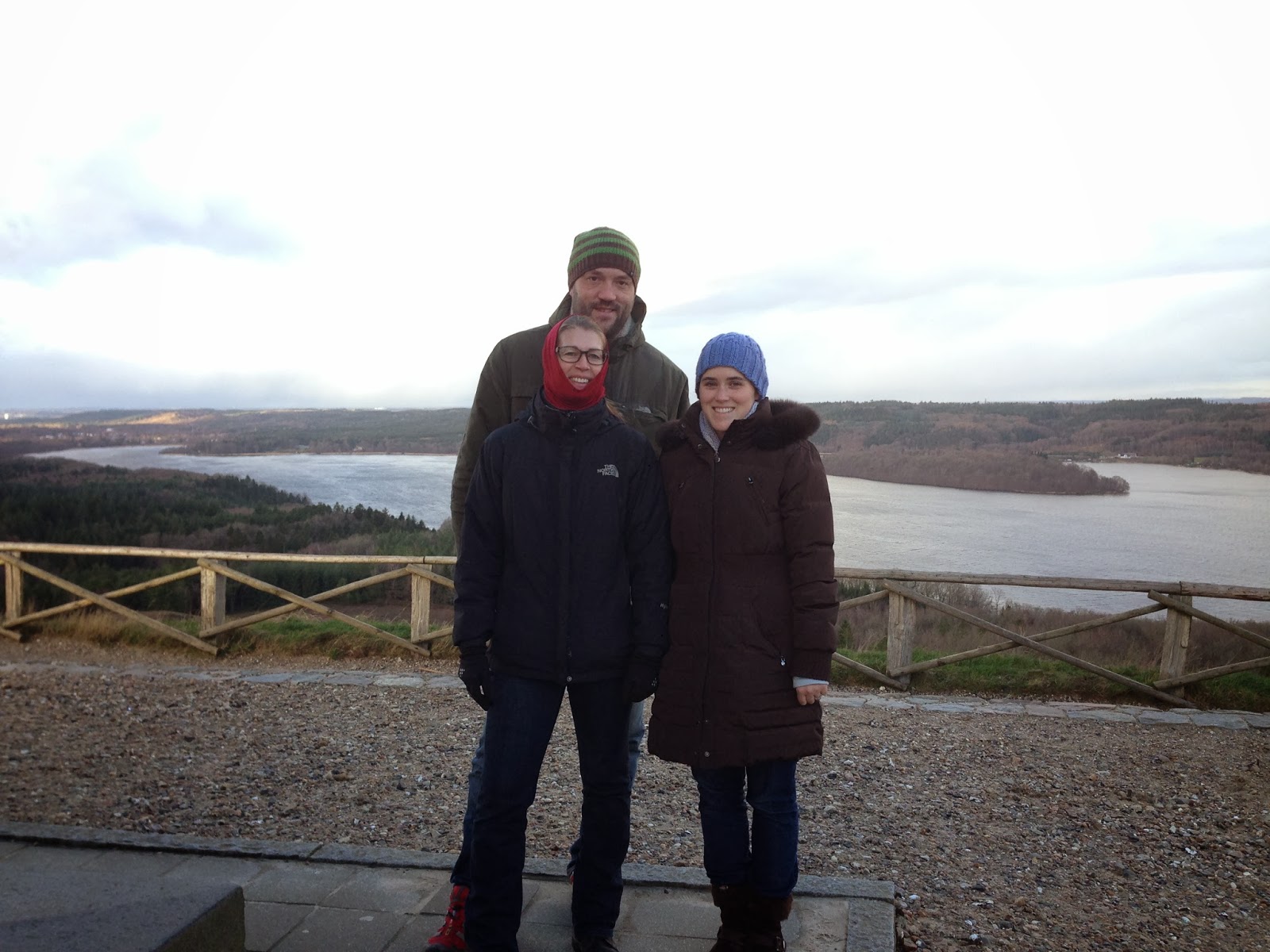Before leaving some people commented on how this would be
such a “life-changing experience” and while I smiled in response, I secretly
thought “maybe incredible, maybe eye-opening, but certainly not life-changing –
that’s just us Americans exaggerating again.” So, if you read the title of this post and rolled your eyes
– I would have been right there with you not too long ago. However, I turned out to be wrong.
This experience has been incredible, and it has been
eye-opening, and it has also been life-changing because it has been so much
more. I don’t think I will ever be
able to look at our education system through the same eyes again, which will
impact my teaching and my students for years to come.
Further, this experience has made me take a step back and
look at myself on a more personal level as well. It made me realize that I actually can be happy without a
million things to do and that letting go of that stress can not only make me a
better teacher, but also a better person.
I’ve already been told this countless times by family members, friends,
and mentors, but it is difficult to accept when you are surrounded by it. Here, the positive effects of
this attitude are clear in every facet of society and, while I’m sure there are
over-stressed, competitive people in Denmark, I didn’t meet them on this
trip.
The trick, of course, will be to not forget everything I
have learned while here. We’ll see
how I do with that task, but I am confident (and determined to ensure) that it
won’t all be for naught.
This week our group of four had numerous discussions about
what it will be like to go back.
We are all worried that this month will feel like a dream, that we will
return to our normal lives and wonder if any of this truly happened. How will we stay true to what we
learned when people all around us are doing what is familiar to us from
before? How much will we be able
to put into practice in an entirely different education system?
I am apprehensive, but also beginning to feel very
interested to find out what I will see and notice when I return. I think that keeping track of what I
notice during my first weeks back (what feels strange, what feels wrong, what feels
exciting) will be nearly as important as keeping track of what I noticed during
my time here. In this way, I
believe that my learning has only just begun.
And now to make sure I don’t forget everything that happened this week…
Tuesday, Michael and I lead a debate in our English classes on arranged
marriage, which was quite successful!
Six students had to speak from each side, which meant that 12 students
had to not only speak, but also speak about a difficult subject. The debate wasn’t the most effective
debate, but I was very happy with the students’ ability to express an opinion
about arranged marriage – in English! Later that day, all four of us met with the Principal to ask him all of our remaining questions and Michael and I got to interview three 9th graders.
After school, the four of us prepared our Closure Presentation and
then took the train into Aarhus one last time to see Trine and Morten. We had a lovely, relaxing dinner and
ended up staying out much later than expected. It’s strange to not know when we will see them next, but
hopefully sooner rather than later!
Wednesday, Michael and I weren’t teaching any classes, so we got to
observe several classes, including the International Class at Østervangskolen. The International Class is composed of all immigrant students over a certain age in the district (they’re all sent to Østervangskolen). Before you get images of what “all”
means - there are only 12 students in the class. However, I am sure 12 feels like plenty because the class is
incredibly diverse. There are
students from China, Thailand, Syria, Afgahnistan, Poland, Iran, and more. Many of these students are
refugees. I don’t entirely
understand how immigration works, but it seems that these families were instructed
by the government to move to Hadsten, for example, for a certain period of
time. After that time, they can
move wherever they would like in Denmark.
That is why most of these immigrants are here, rather than in Aarhus or another
more obvious immigration location.
The class is conducted entirely in Danish, but there is
obviously a huge range of comfort with the Danish language. The students seem to speak on average
3-4 languages. This list usually
includes English as well as Danish.
Some students speak English with each other and others speak other
common languages. Of course, the
teacher cannot possibly speak all of these languages, so the students work
together to translate for each other.
One girl speaks 9 languages!
Another girl just arrived here at the beginning of January (like us!) so
she understands almost no Danish.
Unfortunately, she also doesn't seem to understand English, which makes
things more difficult.
The students were quite curious about us. After their many questions, we got to
observe a lesson on prepositions (it took awhile, but I eventually figured out
that that’s what we were talking about).
It was fun to observe this class because I felt like one of the
students, since my Danish is on par with some of them.
After school on Wednesday, we had our final meeting with
Birgit, our advisor from VIA, and then had our Closure Conversation. We had made this Prezi for this meeting and then, after presenting, we sat around a table and
discussed our experience. That
evening, we had a lovely dinner at the school. In attendance were all of our host families, the principal,
and others. It was a really
magical evening. Jane and Lotte
read us a letter, many toasts were made, and Brendan and Allison sung a song they
had written called “You can’t sail a Viking ship alone.” I'm sure Allison will be posting a video of this shortly - if not, I'll get her permission to post mine here. This evening truly embodied my
understanding of the Danish word hyggelig.
Team Denmark!
Thursday was Brendan and Allison’s last day. Michael and I began the day by saying
goodbye to most of our 7th graders and then teaching our 9th
grade English lessons. During the
lesson we watched this TED talk and had them write their own
“Love Letters to Strangers” (you’ll have to watch the TED talk to understand
what I’m talking about). We
weren’t sure exactly how it would go over, but it was actually pretty
incredible. The students took
these letters so seriously.
They are some of the most heartfelt letters I have ever read. Michael and I are bringing them home to
distribute throughout Santa Barbara.
After school, Michael and I took a final walk through the
central area of Hadsten before joining up with Allison and Brendan for our
promised goodbye walk through the forest.
Brendan had been talking about this incredible forest the entire month,
and it lived up to expectations.
It had a mystical feeling and even had a spot Brendan called the “faerie
mound” where we exchanged cards.
Michael also made his first snow angel (there was a lot of snow this
week) and we all made snowfrogs.
We were trying to make snowmen, but the snow just wasn’t sticky
enough.
It’s strange because we know we’ll all see each other again
soon (or at least we can if we can find the time), but we also know this really
is a bigger goodbye than that makes it seem because it’s the end of a very
special experience.
Friday, Michael and I taught our final two English lessons
and said goodbye to our 9th graders. The final lesson in the unit happened to be on “Goodbye”
(how convenient!!) so we had worked it all in together to serve a dual
purpose. We ended the lesson with
another letter-writing exercise, but this time instead of writing to a
stranger, they had to write to someone (or something) very specific. Of course, if they wanted they could
also write to us, so we got some very sweet goodbye notes.
One group even decorated an envelope for their goodbye letter - complete with the exact right number of stars and stripes!
At the end of our last class one girl asked if she could hug
us. It was funny because it was
good she asked - at home we probably couldn’t really have said yes. Here we could, so we did and most of
the class proceeded to give us each a hug and say goodbye. We gave them all our email addresses
and told them they could email us if they came to California or wanted an essay
proofed. We’ll see if any of them
take us up on it.
After class we had our last lunch at Østervangskolen (during which the Principal
gave us a nice farewell) and then said our last goodbyes. Lotte had planned one last adventure to Ebeltoft for us that afternoon, so we didn’t sit at home, twiddle our
thumbs, and feel sad about leaving.
Along our drive we stopped along the coast to see a 700-year-old ruin
and to see a layer of ice forming over the ocean! Ebeltoft
is a small, incredibly cute town that is clearly a summer tourist spot, so it
was extremely quiet at this time of year, but was also extremely cute because
all of the old buildings were decorated in snow! We went to the Town Hall (Rådhuset), which is a very old museum and a popular place for couples
to get married, if they don’t want to get married in a church.
Ebeltoft Rådhuset
Ebeltoft
That evening we all had dinner together at Lotte’s house
(Lotte, Jane, Michael, me, Lotte’s son, and later joined by Lotte’s husband –
Thomas was working). Michael and I
had dinner together at Lotte’s his first night in Hadsten (along with Philip)
so it felt very fitting to end our trip with a final dinner there again.
And now, I’m on the train to Copenhagen to see Philip’s
grandparents and then begin my journey home tomorrow. What an adventure it has been. I will miss Denmark so much, but I plan to return again
soon.
Thank you all for reading my blog. It has helped me to make sure I record my experiences, even
when busy. More importantly, it
has been nice to be able to share this adventure with all of you right
alongside through the marvels of the Internet.
.JPG)

.JPG)
.JPG)
.JPG)
.JPG)
.JPG)




























